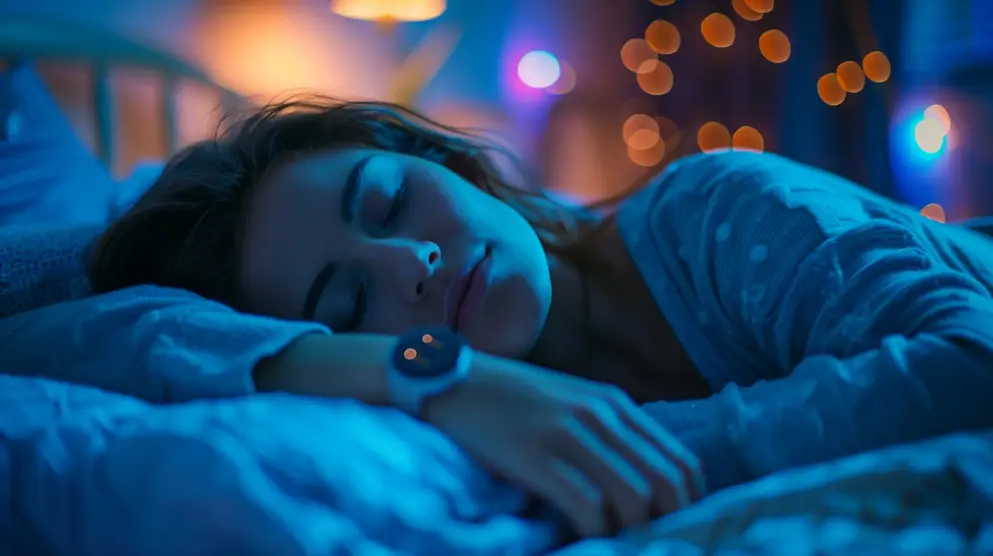
Can a smartwatch detect sleep apnea earlier?
Read about the evidence, accuracy, and potential benefits of Samsung’s sleep apnea feature.
In February 2024, Samsung received De Novo authorization from the US Food and Drug Administration (FDA) for their on-demand sleep apnea feature on the Galaxy Watch.1
As the first smartwatch-based sleep apnea detection feature authorized by the FDA, it is intended to detect signs of moderate-to-severe obstructive sleep apnea (OSA) in adults aged ≥22 years with no previous diagnosis of sleep apnea.1,2
While this development adds to the comprehensive health monitoring capabilities of smartwatches and fitness bands, can data from this feature be considered comparable with that obtained from polysomnography (PSG)? And could it potentially lead to earlier detection of undiagnosed OSA?
Majority of OSA cases remain undiagnosed
Globally, around one in five people has OSA, and the majority of these cases (>80%) remain undiagnosed.3,4
The lag time between the initial appearance of OSA-related symptoms and a positive diagnosis can vary significantly, with the average duration reported to be approximately 10 years
Diagnosis of OSA can be delayed by patient-related factors, such as lack of symptom recognition and reporting, negative perceptions of sleep studies, and financial constraints. Diagnostic delays can also be a result of poor care coordination and fragmented care throughout the healthcare system.5,6 For people with severe OSA, delayed initiation of continuous positive air pressure (CPAP) treatment has been associated with the ordering of sleep studies by physicians who are not trained in sleep medicine.7
Health risks of undiagnosed OSA
The health impacts of OSA extend beyond daytime sleepiness to neurocognitive impairments, risk of chronic diseases, and mortality.3,4,8
Untreated OSA has been associated with reduced quality of life, depression, traffic accidents, cardiovascular disease, and all-cause mortality4
OSA is also a risk factor for conditions such as diabetes mellitus, hypertension, heart failure, stroke, and renal dysfunction.8
How does the Samsung sleep apnea feature work?
When the sleep apnea feature is enabled, the device uses photoplethysmography-derived oxygen saturation (SpO2) values to assess for repetitive, relative changes to blood oxygenation. The user is prompted to seek medical attention if two nights of monitoring data indicate moderate-to-severe OSA, defined by an estimated apnea/hypopnea index (eAHI) threshold of 15 events/hour, within 10 days.2
How accurate is the Samsung sleep apnea feature?
The supporting clinical data for Samsung’s sleep apnea feature was from a non-randomized, open-label, single-blind study (N=620).2
- Its sensitivity and specificity were 82.7% (167/202) and 87.7% (235/268), respectively, for detection of moderate-to-severe OSA (eAHI ≥15) when compared with a physician assessment on a corresponding PSG from an FDA-cleared PSG device
- The specificity results did not pass the pre-specified acceptance criteria; however, a post-hoc analysis revealed approximately one in three participants with false positives (10/33) had at least one night of positive PSG for moderate-to-severe OSA, with mild sleep apnea (AHI ≥5) on their second night, and had no previous diagnosis of sleep apnea. As these participants were directed to appropriate care and potential treatment, a modified calculation increased the specificity to 91.1%. This was considered to surpass the pre-specified specificity acceptance criteria
Overall, the FDA considered the probable benefits of the sleep apnea feature to outweigh the probable risks of its use – that is, the consequences of false positives and false negatives.2
Could the sleep apnea feature lead to earlier detection of undiagnosed OSA?
The sleep apnea feature is intended to prompt people with signs of potential OSA to seek medical advice.2 The FDA notes it is not intended for diagnostic purposes, and does not replace traditional methods of diagnosis (such as PSG) and treatment by a qualified clinician.2
Encouraging individuals with potential signs of sleep apnea to seek medical advice may help to identify undiagnosed cases sooner1
While there may be false positives, the sleep apnea feature's detection of OSA signs does not directly lead to further testing. Instead, healthcare providers conduct a thorough evaluation, including reviewing medical and sleep history and a physical exam, to decide if an in-laboratory PSG or home sleep apnea test is necessary.9
This sleep apnea feature will be available in Samsung Galaxy watches in the USA in the third quarter of 2024. Its availability in other regions remains to be confirmed.1
Smartwatches detect atrial fibrillation
References
- Samsung. 2024. Samsung's sleep apnea feature on Galaxy Watch first of its kind authorized by US FDA. https://news.samsung.com/global/samsungs-sleep-apnea-feature-on-galaxy-watch-first-of-its-kind-cleared-by-us-fda
- Samsung Electronics Co. Ltd, 2023. De novo classification request for sleep apnea feature. https://www.accessdata.fda.gov/cdrh_docs/reviews/DEN230041.pdf
- Faria, 2021. The public health burden of obstructive sleep apnea. https://www.doi.org/10.5935/1984-0063.20200111
- Lechat, 2021. Multinight prevalence, variability, and diagnostic misclassification of obstructive sleep apnea. https://www.doi.org/10.1164/rccm.202107-1761OC
- Ye, 2022. Facilitators and barriers to getting obstructive sleep apnea diagnosed: perspectives from patients and their partners. https://www.doi.org/10.5664/jcsm.9738
- Randerath, 2018. Challenges and perspectives in obstructive sleep apnoea. https://www.doi.org/10.1183/13993003.02616-2017
- Jobanputra, 2018. 32nd Annual Meeting of the Associated Professional Sleep Societies, LLC. 0524 Factors associated with delayed treatment of patients with severe obstructive sleep apnea. https://doi.org/10.1093/sleep/zsy061.523
- Gleeson and McNicholas, 2022. Bidirectional relationships of comorbidity with obstructive sleep apnoea. https://www.doi.org/10.1183/16000617.0256-2021
- Kapur, 2017. Clinical practice guideline for diagnostic testing for adult obstructive sleep apnea: An American Academy of Sleep Medicine Clinical Practice Guideline. https://www.doi.org/10.5664/jcsm.6506
